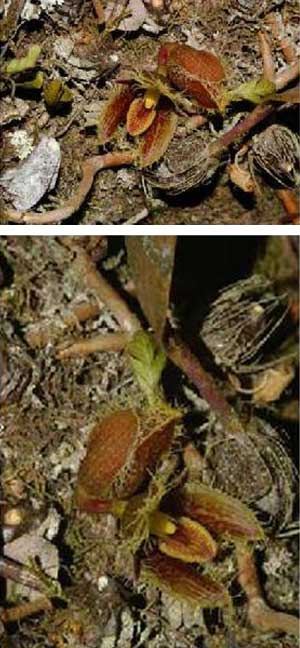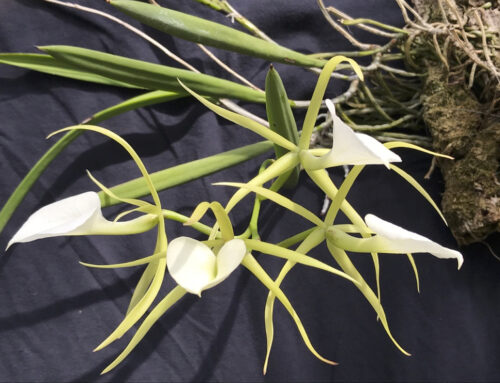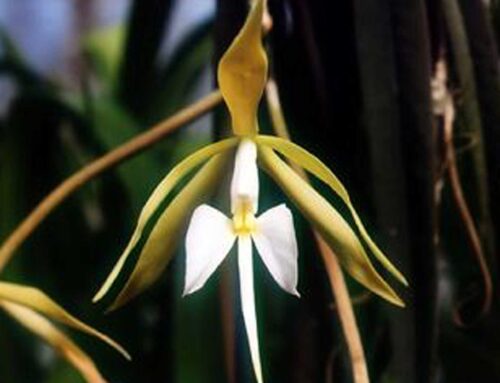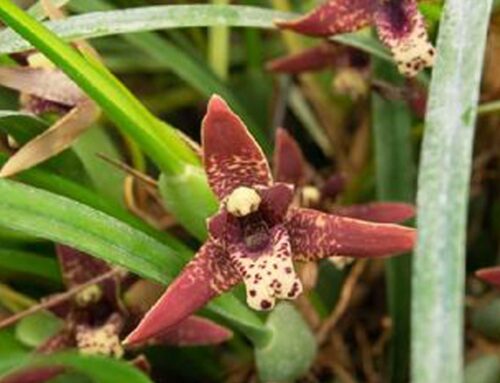By Tom Sampliner
The large genus of Bulbophyllum at 1800 species worldwide is noteworthy for having some unusually configured flowers. They have a distribution primarily in the tropics. Perhaps these two traits assure popularity among orchid growers. The particular species of this article is available to collectors. Several internet sites claim to stock them such as Orchid Web; Andy’s Orchids; Orchid Species Plus and Marni Turkel; however, though she provides some basic cultural information her stock is presently sold out.
I encountered this charismatic species in the wild in Northern Thailand during a visit in March of 2019.
It was growing upon a large mossy boulder within an upland mixed scrub, dipterocarp and pine forest. The boulder was cracked and creviced due to weathering and liberally covered with mosses, lichens and liverworts which aid in both decomposition of the boulder, buildup of some organic debris, and retention of some moisture. Its creeping growth habit over the boulder qualifies the species as a lithophyte. March is late dry season in Northern Thailand. Watch your footing as everything is covered in a rather solid layer of dry leaves crunching under foot hiding roots, twigs, rocks and crevices. I was able to see florets in prime bloom as I hope my pictures establish. The perimeter of each floral part (sepals and petals) are deeply fringed with long stringy yellowish-brown hairs. This and the forward projection of each of the flower parts making a hooded cavity make for an orchid one could easily associate with Halloween.
The orchid can be found from sea level up over 4000 feet. Don’t let the height fool you because I can attest that during the dry season, the daily temperature can easily reach 40 degrees centigrade (over 100 degrees Fahrenheit). While there can be significant night time temperature drop off, freezing is never a possibility. Humidity in the dry season can be low say 40-50% but combined with the day temperatures, this is downright beastly to us Great Lakes residents. Maroon color within the flower indicate a foul odor reminiscent of carrion. This in turn indicates beetle, fly and other insect visitors.
Acquire and grow it for a conversation piece.





